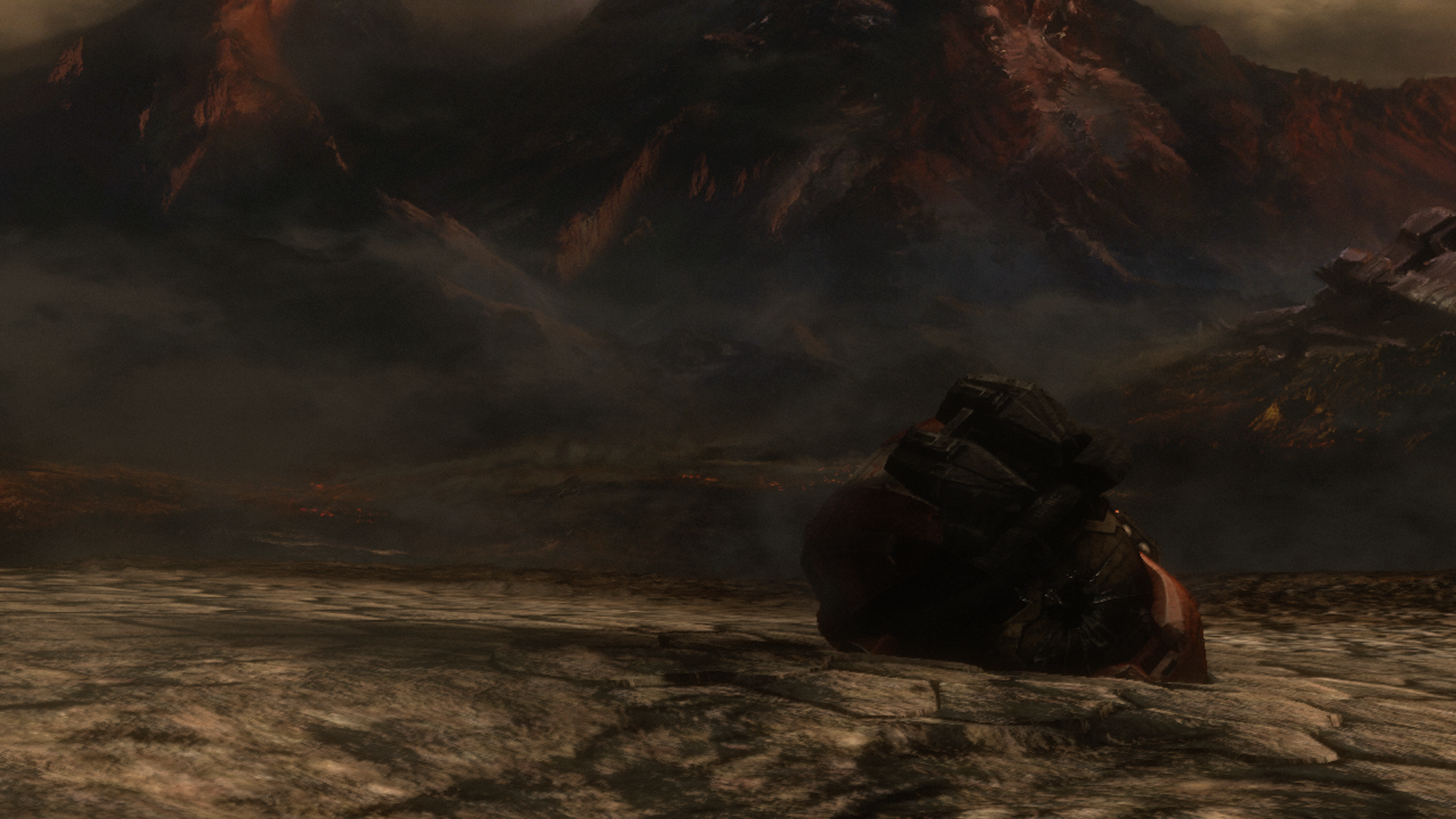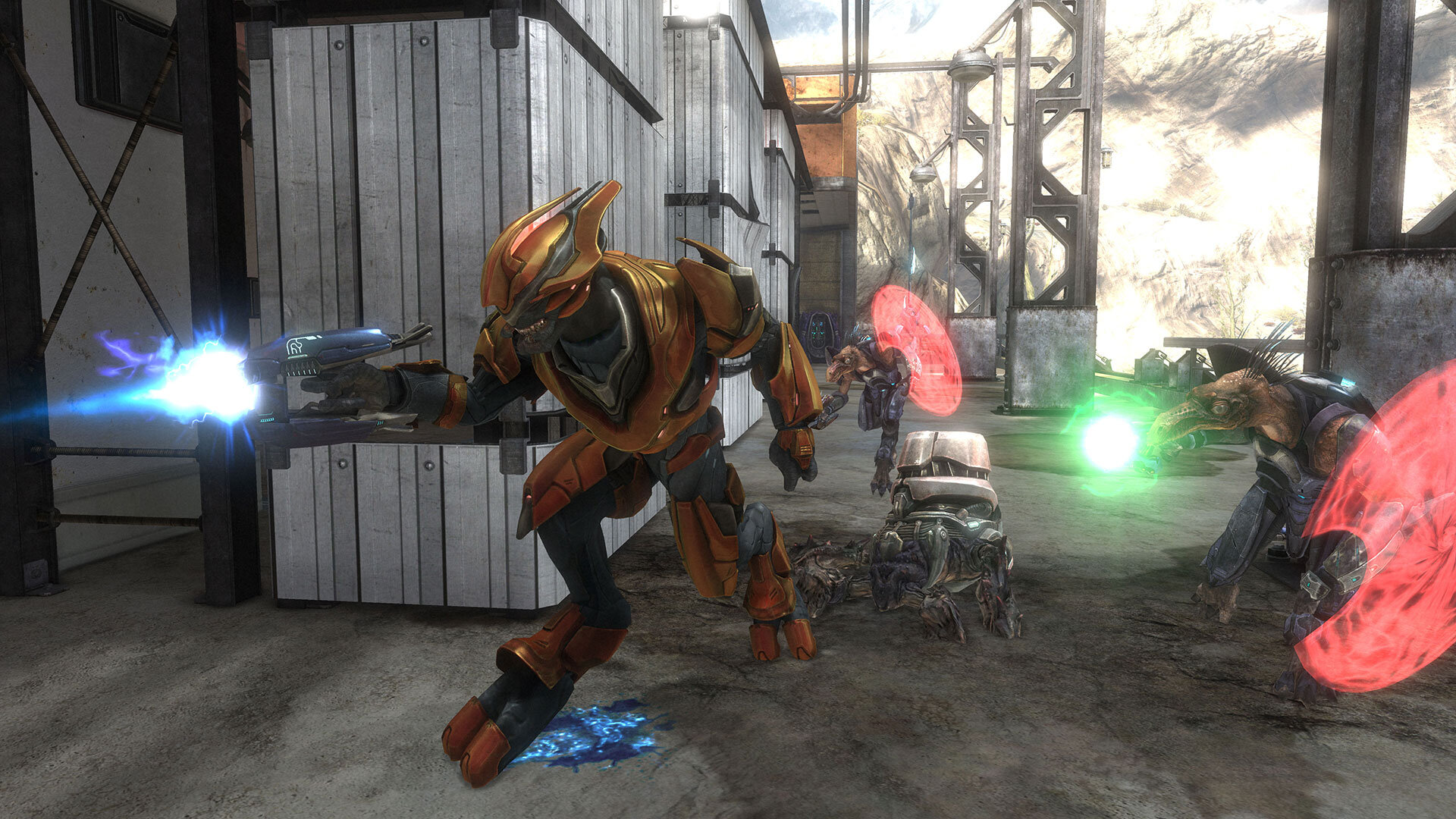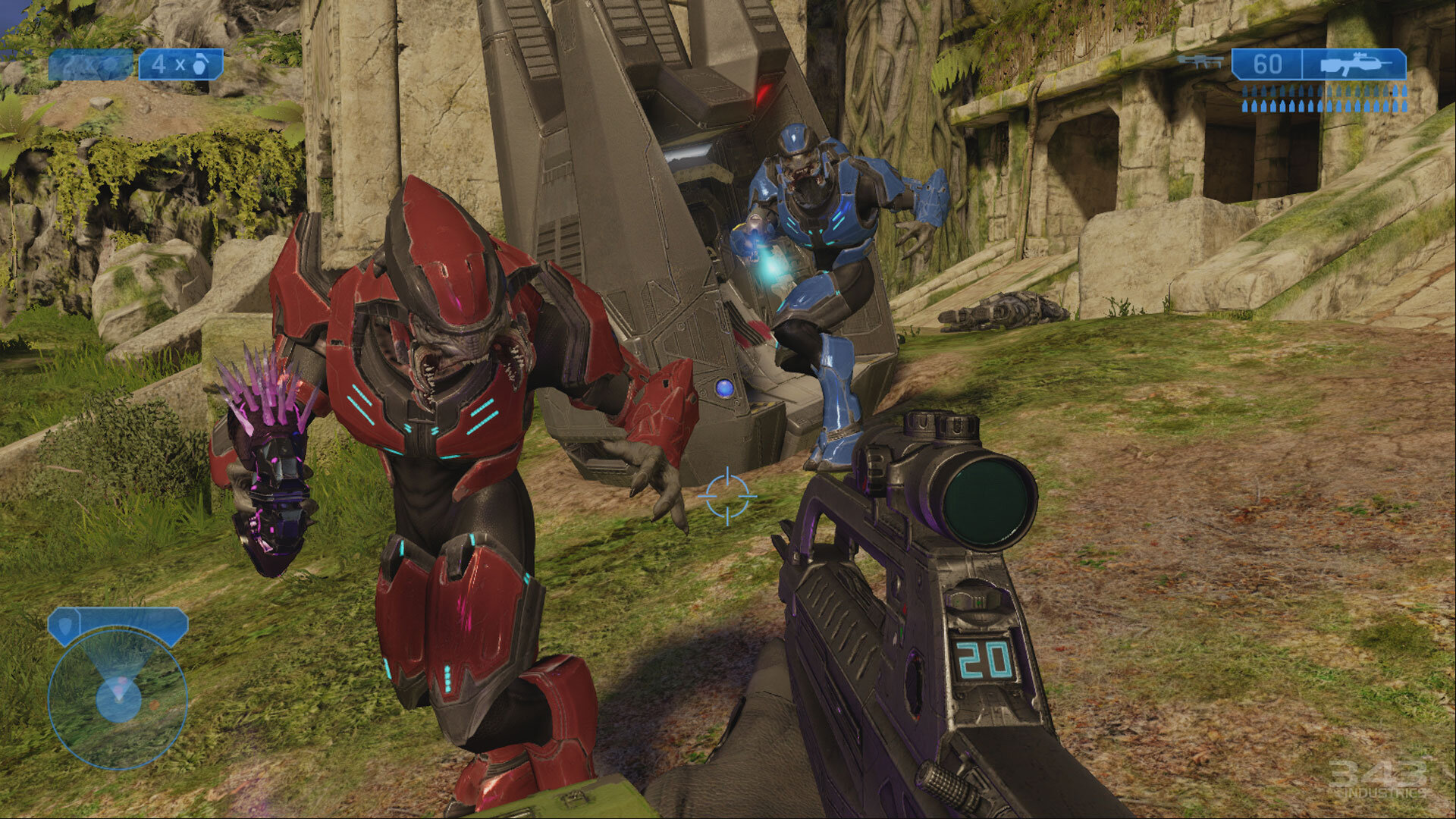Classic Comeback | Halo: Reach
Reaching Back
On 14 September 2010, Bungie released its fifth and final Halo game. It was an ambitious last hurrah that would change the Halo-universe for the better. Now celebrating its 10th birthday, Halo: Reach is still a shining example of the series at its best and one of the best games of the 7th generation.
Unlike previous Halo titles which focused on the adventures of Master Chief and Cortana cavorting across ancient Forerunner installations and thwarting the plans of the Covenant, Reach is a prequel that tells a serious and solemn story about a team of noble Spartan super-soldiers set on a doomed path.
Even before the game’s release, the marketing departments at Microsoft and Bungie seemed very intent on making audiences feel as sad as possible about the loss of a fictional planet that had never been seen before in a Halo game. “Remember where it all began. Remember Reach” said the iconic “Deliver Hope” live-action trailer. Reach is mentioned only a few times in previous Halo titles, notably at the very beginning of both Halo: Combat Evolved and Halo 2, and only die-hard of Halo fans would have read 2001 book The Fall of Reach by Eric Nylund. However, piecing these old references and the game’s marketing together paints a pretty good picture of Reach’s annihilation. Somehow, in this story about a colony planet’s inevitable ruin, you would fit in.
Yes, my Noble Six is basically Master Chief but orange and black. Let’s move on.
Right from the start, the game doesn’t pull any punches and establishes that this is going to be a darker story, opening with shots of the war-torn and battle-scarred surface of Reach. As the new but recognisably Halo music builds, a damaged Spartan helmet is seen partly buried in the ground surrounded by dust and heat haze. This helmet belongs to you, and now you know how this story ends.
Bungie’s decision to have the player be a faceless Spartan soldier with fully customisable armour and a past of dubious top-secret operations was a stroke of genius as it meant the protagonist would be expendable so as not to interfere with Master Chief’s story, while also allowing the player to inhabit the character. You are Noble Six, a blank slate, and this is the story of your selfless attempts to save humanity.
In the opening cutscene, the player sees their Noble 6 meeting their new companions in conflict, Noble Team; A small force of elite super-soldiers that have been drafted in to investigate some unusual disturbances on Reach.
Each of the five other members of Noble Team seem uninteresting at first, what with them being built on common military personnel stereotypes from all sorts of media. Carter is your no-nonsense leader, Kat is the inquisitive and sassy tech-person of the team, Jun is the silent sniper, Jorge is the old-dog of the group, and Emile is the relaxed, sometimes wise-cracking, edgy guy.
Kat’s sudden murder was inspired by the death of Alan Tudyk’s character in the film Serenity
In Eurogamer’s review of Halo: Reach, Oli Welsh says “these bland characters never find the place in your heart they're supposed to”. He is definitely not wrong either. They are objectively not the most interesting characters in the world. There’s a lot of expository talking and fluent military-ish throughout, though there are odd glimmers of personality in some of the members.
I think the reason players still like the members of Noble Team, despite how bland they can be, is that they are, at heart, selfless and brave. Each of their deaths comes either very suddenly or as a sacrifice due to an unforeseen complication, and just as they were so close to completing their mission.
Kat’s death at the hands of an Elite Zealot sniper is by far the most abrupt and she is the only one that doesn’t go out fighting or sacrificing themself for the greater good. However, I think this abruptness serves as a strong reminder that Spartans are not as invincible as they seem.
A Spartan with a Heart
I think there is one notable exception in terms of bland characters, however. Jorge, the old dog, is the most underrated character of Noble Team. What he lacks in strong leadership skills, cool armour, or edgy skull carvings, he makes up for in being the most compassionate and friendliest of the Spartans, and the only one to show even a shred of humanity.
Jorge, much like Master Chief, is a SPARTAN-II, rather than a newer generation SPARTAN-III like the rest of Noble Team. Without getting too deep into Halo lore, the fact that Jorge is an old-gen guy means he should be one of the most elite soldiers to have ever lived. SPARTAN-IIs are generally considered to be the most superior in terms of physical ability but come with a lot of baggage surrounding costs and highly dubious ethics.
Master Chief is the archetypal SPARTAN-II, a highly capable and dedicated super-soldier who says little and follows orders, but Jorge is something of an outlier regarding his personality. Of course, he is highly capable and loyal to his team, but as the oldest member of Noble Team who was also made into a Spartan at a younger age, he seems to be much more freethinking and human, unlike his more robotic teammates.
Emile riles up Jorge for his attempts to comfort the woman, leaving Carter to keep them both in check.
Unlike his teammates, it’s clear that Jorge understands that being a near 8ft walking suit of armour is quite intimidating to regular civilians, especially since Spartans were originally created to quell human rebellions in the outer human colonies of the Halo universe. After Jorge’s attempts to comfort a terrified woman, Emile remarks to Noble 6, “big man forgets what he is sometimes”, but Jorge is quick to remind Emile that she just lost her father so is understandably a bit shaken.
I think this exchange, brief though it is, is the best example of Jorge’s human side. He seems to actively try to show that he is more a man than a war machine of the UNSC. Emile, on the other hand, seems a lot more content with giving up his life to live and die as a Spartan, and the other members of Noble Team are too dedicated to their missions to worry about those caught up in conflict.
The Competent Covenant
The Covenant in Halo: Reach had more enemy types and ranks compared to previous Halo titles.
The near-total destruction of Reach and the terrible deaths that the members of Noble Team suffer also made Bungie’s different approach to the Covenant enemies in Halo: Reach very apparent.
In Halo: Combat Evolved, the Covenant were a goofy array of Grunts, Jackals and Elites. Grunts have their high-pitched screams and terrified running, and Elites are certainly more intimidating and capable, but they still make strange alien noises and say “wort, wort, wort” a lot. By Halo 2 and Halo 3, the Covenant were much more nuanced, and we learned a lot more about how their misguided religious beliefs and worship of Forerunner artefacts, especially the halo rings, entwine with their military campaign to keep humanity from interfering with their plans.
However, almost none of this is present in Halo: Reach. The religious leaders of the Covenant, the Prophets, are absent from the story and the Covenant faction resembles a more brutal, merciless, and highly evolved version of the one seen in Halo: Combat Evolved. Meanwhile, the Elites have seen the biggest makeover compared to the last time they were adversaries back in Halo 2. In Reach, there are more clearly defined ranks, each with their own personalities and abilities on the field.
The Elites are a lot more violent in Halo: Reach and these Zealot assassin teams feature prominently.
Even the Elites’ appearance is more intimidating than previous iterations. They’re much taller than the average Spartan and have small, black, beady eyes and much larger mandibles with giant teeth. Their armour is also generally a lot flashier and more visually striking, nicely balancing function and fashion, unlike the more basic and blocky armour types seen in previous titles. None of the Covenant species speak English as they do after Halo: Combat Evolved either. This, coupled with the updated appearances, makes them feel far more alien than ever before.
Reach’s Covenant is not a religious allegiance of aliens that also happen to be highly militarised. Instead, all the talk of Holy Rings, Sacred Icons, the Great Journey and whatnot is replaced by battle cries, plasmablasts, and city-destroying glassing beams of an alien armada, hellbent on totally wiping out humanity for being in their way. Obviously, Bungie took a very radical approach to portraying the Covenant in Halo: Reach. It sacrifices and changes a lot of what players were used to, but it serves the purpose of contributing to a much gloomier story.
The Mantle Changes Hands
On top of the incredible campaign, Halo: Reach built on the success of Halo 3: ODST’s Firefight horde mode and had a great multiplayer sandbox that worked well for arena modes, big team battles, and party games built in Forge mode. It was an undeniable success long after its launch and is objectively one of the best Halo games out there, but it represented a major turning point for the Halo franchise as it would be Bungie’s last contribution.
By March 31 2012, all things Halo, including game data, had been turned over to 343 Industries. This is the point where things start to go a bit wrong. Halo 4 was by no means a failure. It sits at a favourable 87 critic score on Metacritic but has one of the lowest user scores for a Halo game at 7.1. For reference, every Halo title developed by Bungie has a higher user score than Halo 4. It was praised for its exciting yet emotional story that dived deeper into the relationship between Master Chief and Cortana but was criticised for its multiplayer offering which felt more in line with Call of Duty than Halo.
2014 saw the release of the Master Chief Collection, an ambitious compilation of Halo: Combat Evolved Anniversary, the new Halo 2 Anniversary, and HD remasters of Halo 3 and 4. It sounded like a perfect package to bring the old generations of Halo onto the Xbox One in preparation for Halo 5.
The Master Chief Collection united Master Chief’s story on one console and has gone on to include Bungie’s other titles to fill out the roster of games.
Fans were not happy, however, as the collection released half-baked. The multiplayer was nearly unplayable, and bugs persisted throughout the whole experience. Things were so bad that in December of 2014, 343 Industries announced players would be able to download a free remaster of Halo 3: ODST’s campaign as an apology.
Since then, however, the Master Chief Collection has seen a lot of love and has even made its way to PC. More importantly, Halo: Reach was added in December last year as an HD, 60fps remaster. I was lucky enough to play a quick run of the remastered Halo: Reach’s Firefight mode before it was released at Xbox’s fan event, X019 in November 2019 and it was delightful. The original game’s graphics hold up nicely even today, so an HD overhaul and higher framerate makes the experience super smooth and crisp.
This was a huge win for Halo. After the Master Chief Collection’s rocky start and Halo 5’s relatively poor reception, the return of classic content to new platforms sparked a wave of Halo nostalgia and more positive reviews for the re-release of Halo: Reach. However, in classic MCC fashion, it wasn’t without its problems. The Collection’s ever-expanding scope continues to be a blessing and a curse but it’s an undeniably good deal regardless of how buggy it can be.
Full Circle
Halo Infinite has highly detailed models and effects but seems to be let down by some lighting issues and also needing to run on a base 2013 Xbox One
Turning to Halo: Reach on its 10th birthday was a joy, but equally frustrating as it made me think ‘why isn’t modern Halo like this?’. It makes me long for more adventurous spin-off style games that delve into the Halo universe instead of experimental gameplay ideas wrapped up in Master Chief’s story. Somehow Bungie really nailed the tonal and gameplay changes of Halo 3: ODST and Halo: Reach. But 343’s attempts to grow the universe in new ways with Master Chief almost always remaining the central character has proven to be clunky and downright bizarre in some cases (I’m looking at you, Halo 5).
Halo: Reach’s campaign is an emotional tragedy that wonderfully ties into Master Chief’s story, with a beautiful soundtrack, graphics that still hold up today, and a multiplayer offering that no other recent Halo game has come close to. I’m still not sure that it is the outright best Halo game, but it certainly represents a lot of aspects of Halo at its best, and its story is a monumental example of the first-person shooter campaign that seems to be increasingly left by the wayside. I really hope that future Halo titles can learn from this game and see why it is still so great after all these years.













